Why is my poinsettia dropping leaves? Tips for healthy holiday plants
Discover why your poinsettia plant might be dropping leaves, and the best ways to remedy it
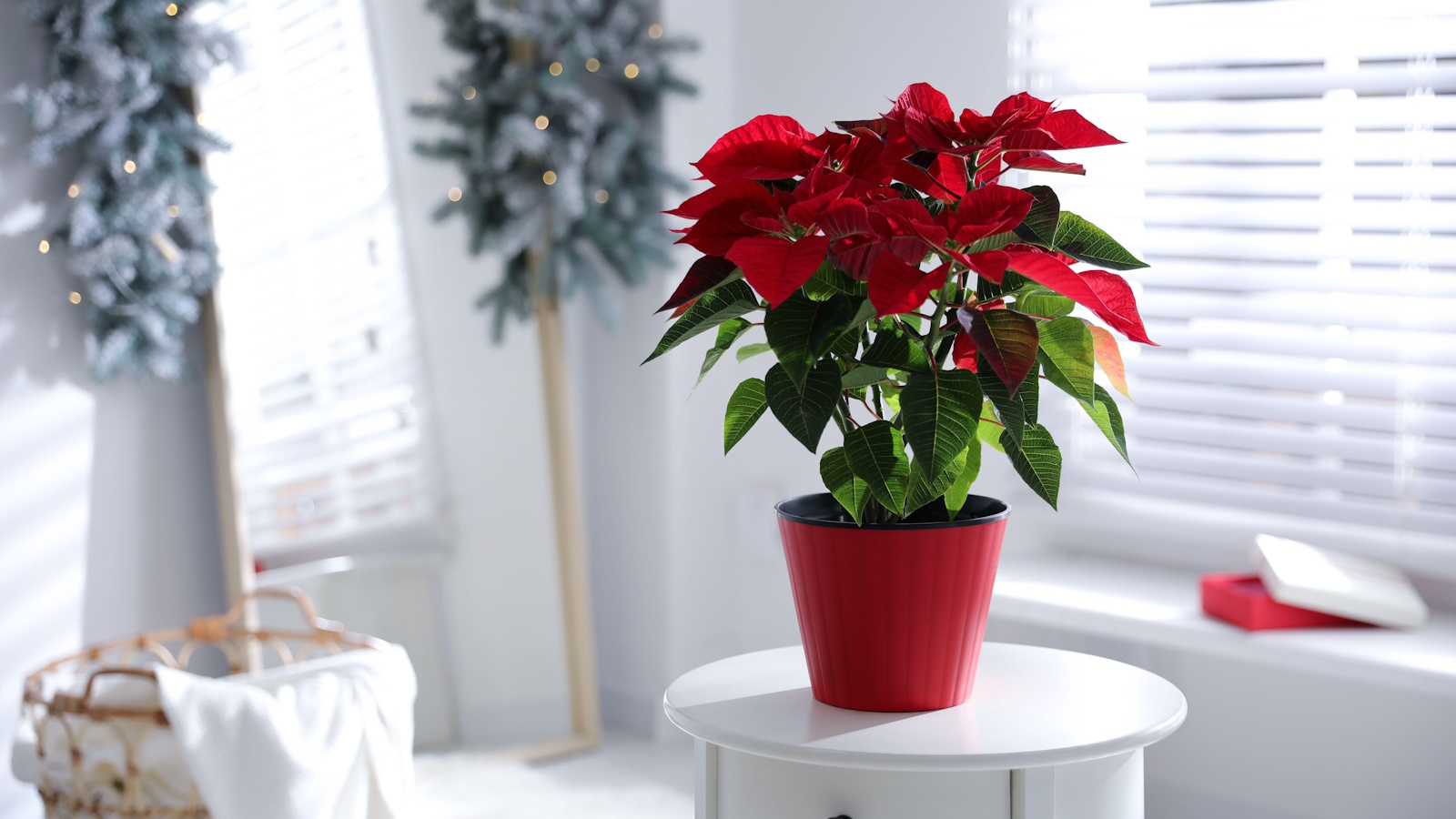

Q: I was recently gifted a beautiful poinsettia plant by my friend, but already it has begun dropping some of its leaves. I really want to keep it looking fresh and healthy for the holidays. Is there anything I can do to fix the situation?
A: Poinsettias, or Euphorbia pulcherrima, are beautifully vibrant plants, which are hugely popular during the holidays. They can be sensitive, but with the right care and conditions leaf drop is not fatal to your poinsettia. Some level of leaf drop is normal in these plants and could be due to several reasons, such as a result of a change in environment. But if you think it is dropping more than it should be, we need to understand the cause. Let’s take a look at the possible reasons your poinsettia might be losing its leaves, and work out the best way to remedy it.
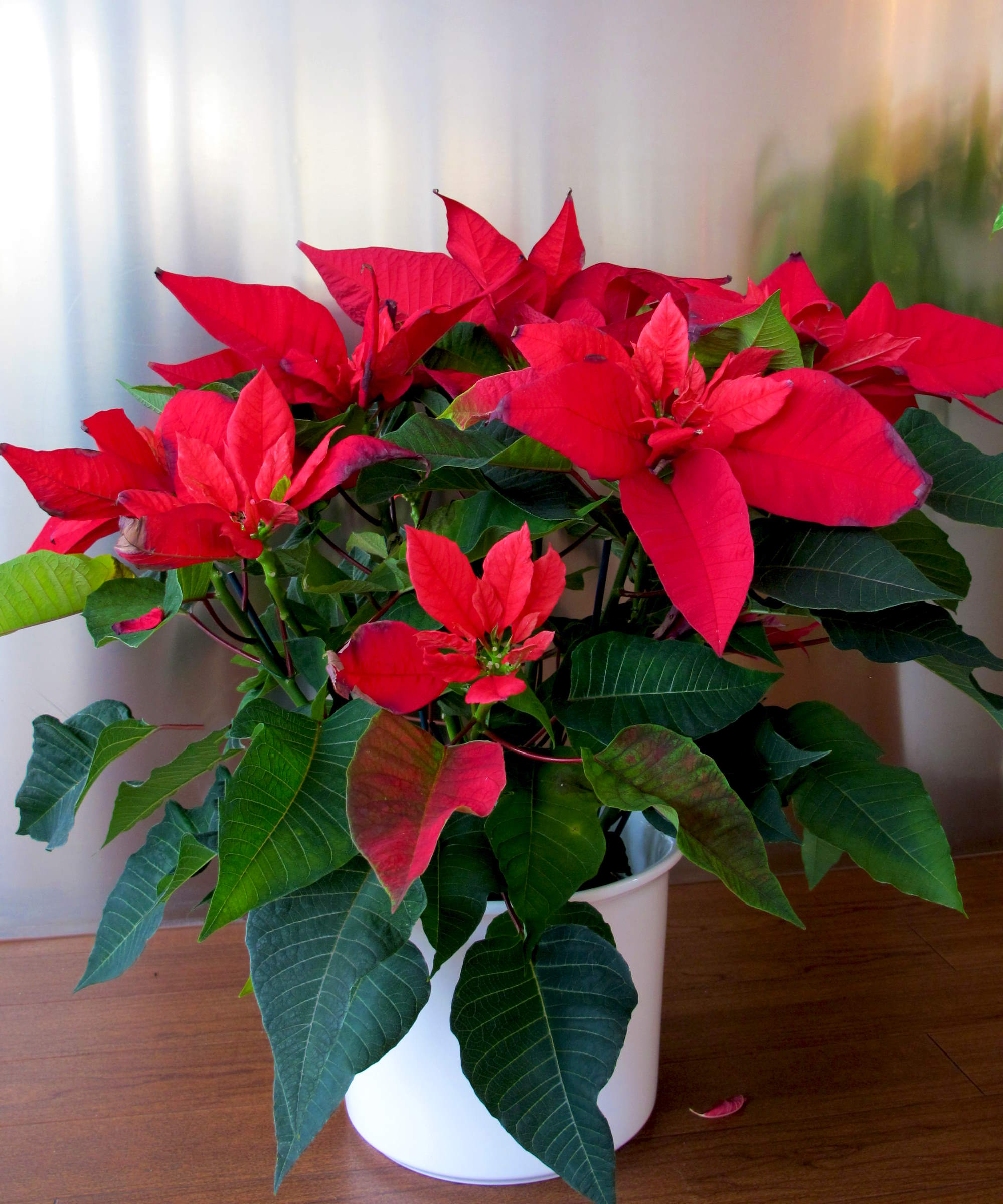
4 reasons why your poinsettia is dropping leaves
These plants were a staple in my home growing up, and I've continued the tradition of styling them as part of my own family's holiday decorations. Though I must admit, I tend to opt for the white varieties rather than the classic red ones my mom favoured.
Based on my years of experience with these plants, I've compiled the possible causes of leaf drop, and detailed ways of switching your care routine to avoid it becoming a big issue for your plant.
Make sure it has the right amount of light
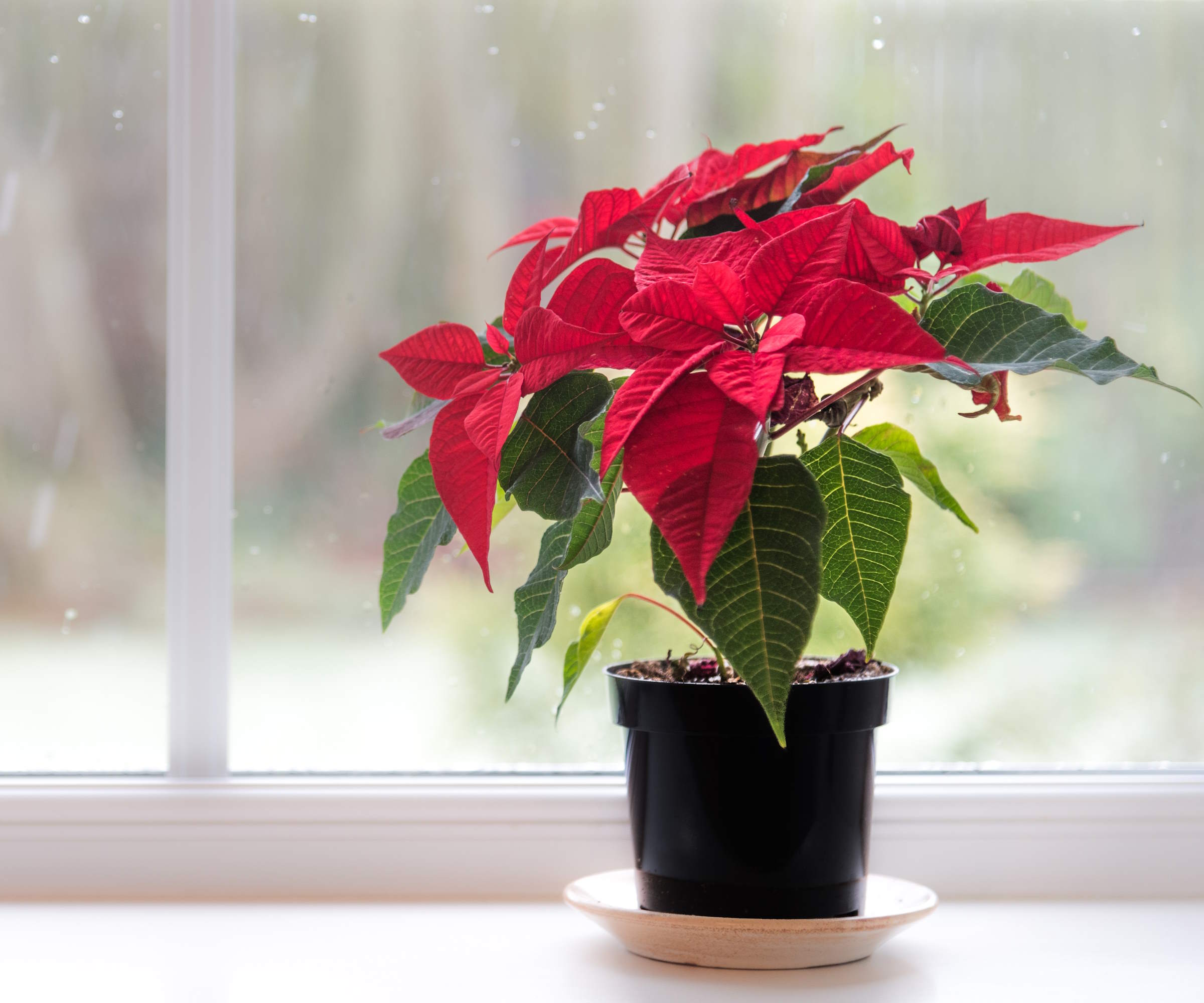
The first step is to check you have your poinsettia located in an area with just the right amount of natural light.
Poinsettias require bright, indirect light. Too much direct sunlight can scorch the leaves, while too little light can weaken the plant.
Of course, if you want to keep your poinsettia alive after the holiday season - and you should give it a go as it is entirely possible - then the plant requires a period of time in the dark in order to rebloom for next year.
Get the humidity level right
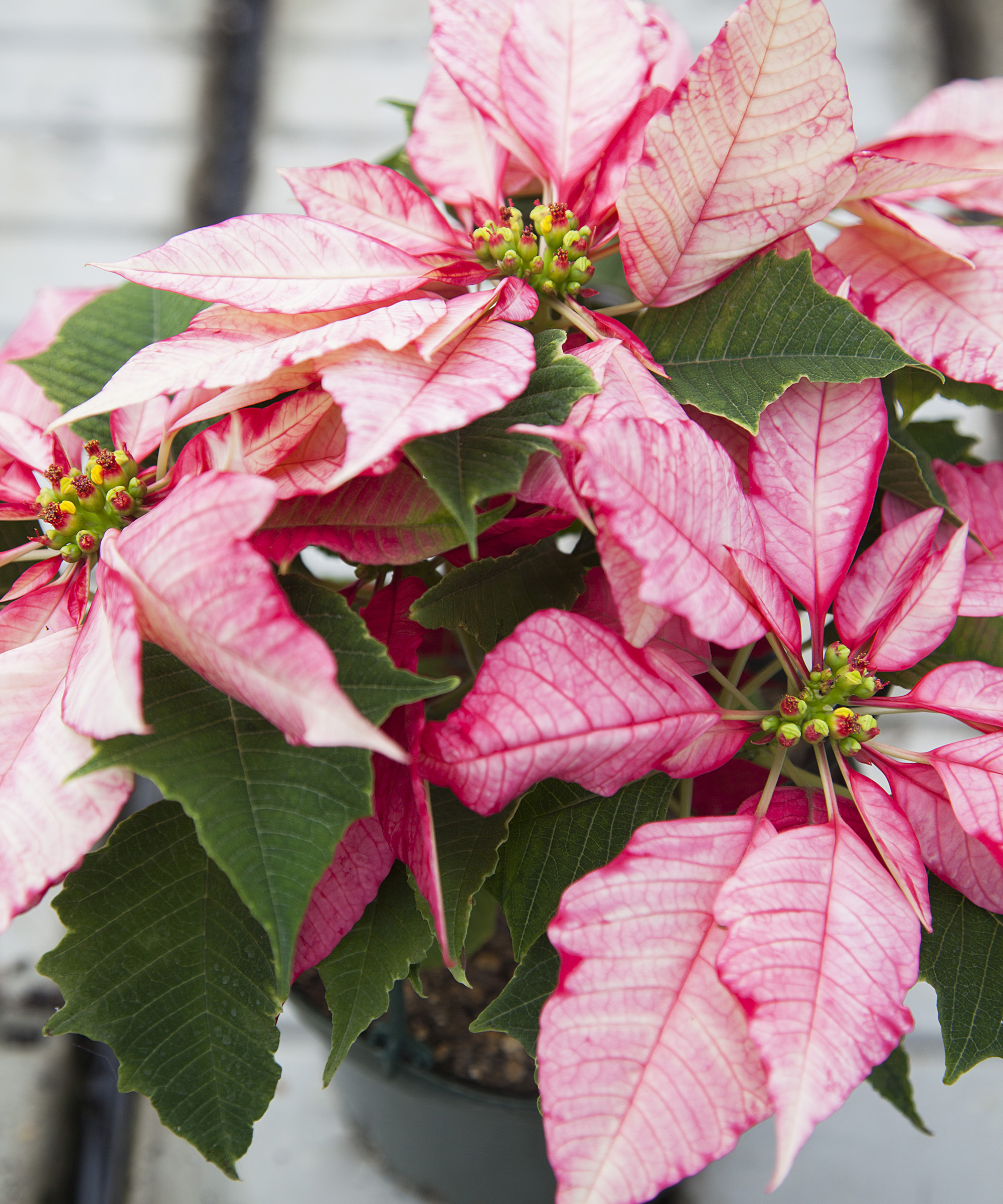
Poinsettias are happy in a humid environment. They are native to Mexico and Central America, and prefer warm, tropical conditions.
They can tolerate a lack of humidity fairly well, but if your indoor air is very dry you could consider using a humidifier. We would often place a shallow water tray near the plant to try and boost humidity levels and try to recreate its natural growing conditions.
Poinsettias come in a range of colors, from vibrant reds and pinks, to yellow and cream. This beautiful, potted white poinsettia variety is available to order from Walmart.
Give it the right amount of water
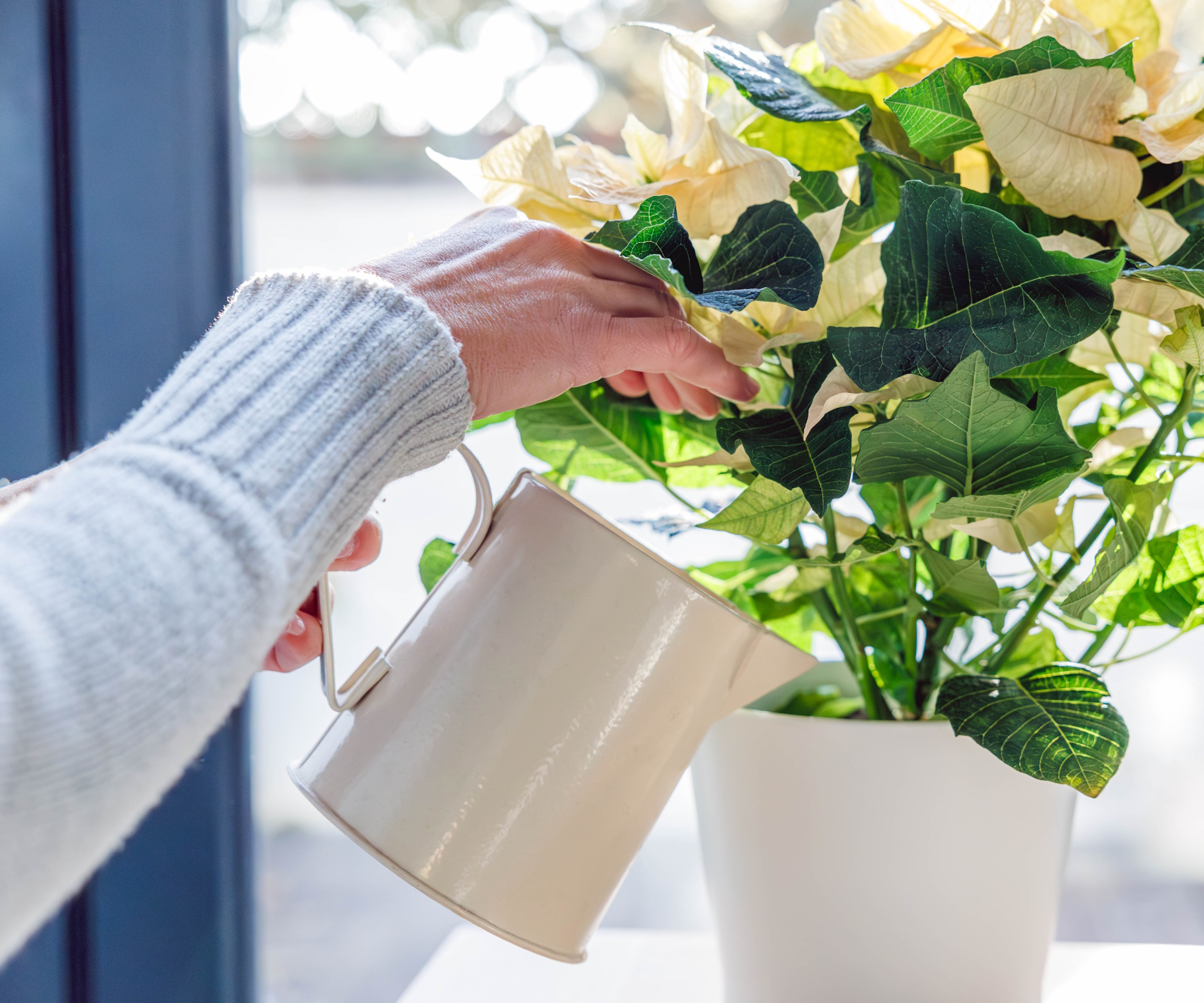
As is the case with so many of our beloved houseplants, both underwatering and overwatering can cause leaf drop in poinsettias.
To create optimal conditions, the soil should be kept consistently moist, but not soggy. You can allow the top layer of soil to dry out slightly before watering your poinsettia again.
Try to check the soil every three days by using the well-known finger test: press your finger into the soil by about two inches, and if the soil is dry water well.
If you see any of your poinsettia leaves turning yellow, underwatering might also be a reason. Removing any drooping or yellowing leaves will help the plant redirect its energy to produce new, healthier growth.
Avoid temperature fluctuations
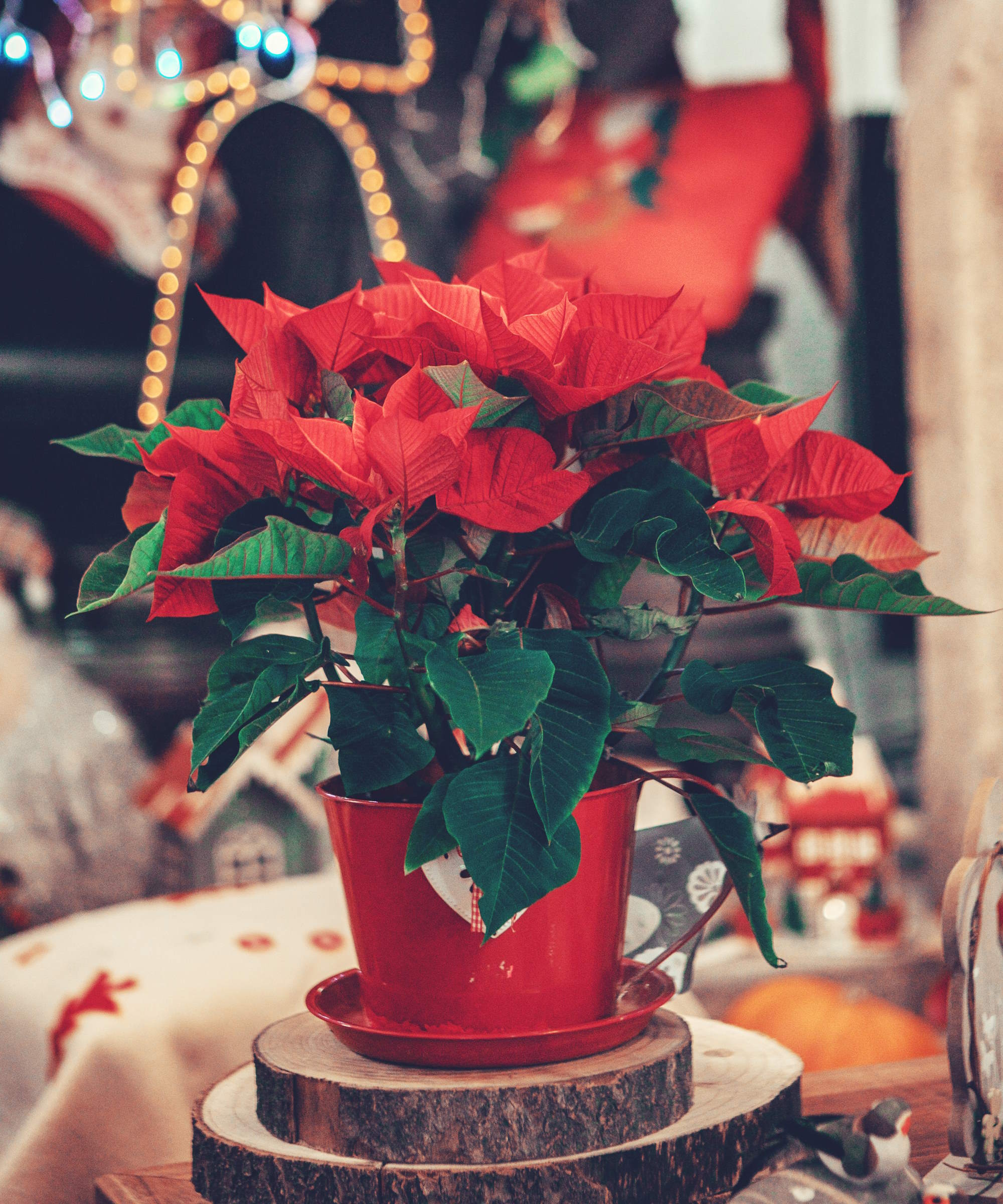
This is a key reason why your poinsettia might decide to drop some of its leaves. Poinsettias do not enjoy temperature fluctuations, which is why we sometimes see leaf drop as soon as we get a plant home from the store.
We also buy poinsettias in winter time, when we all struggle with cold snaps and low temperatures. Something we used to do in my house was move our plants upstairs overnight, where it was warmer, rather than risking nighttime freezes stressing the plant.
The ideal temperature range for a poinsettia is between 65-70°F. Making sure you keep them away from cold drafts and excessive heat from central heating sources will also help to ensure your poinsettia holds onto its leaves.
FAQs
Can I keep a poinsettia outdoors?
Poinsettias are native to Mexico and Central America, and are therefore not very tolerant of the cold. If you want to place one outside, it's advisable to only do so in the summer months, and if you live in the USDA hardiness zones 9-11. It may be possible to place it on an outdoors dining table as a decoration for a short period of time in winter, but make sure to bring it indoors for the majority of the time.
If getting the care regime spot on for your poinsettia has inspired you to give one as a gift next year, you may be interested to know how to propagate a poinsettia and create new plants yourself, for free.
Sign up to the Homes & Gardens newsletter
Design expertise in your inbox – from inspiring decorating ideas and beautiful celebrity homes to practical gardening advice and shopping round-ups.

Rachel is a gardening writer, flower grower and floral designer. Her writing career began on Country Living magazine, sparking a love of container gardening and wild planting. After more than a decade writing for and editing a range of consumer, business and special interest titles, Rachel became editor of floral art magazine The Flower Arranger. She then worked as a floral designer and stylist for six years, before joining Homes & Gardens. An expert in cut flowers, she is particularly interested in sustainable gardening methods and growing flowers and herbs for wellbeing. In summer 2024, she was invited to Singapore to learn about the nation state's ambitious plan to create a city in nature, discovering a world of tropical planting and visionary urban horticulture.
-
 How to grow sassafras – for a low-maintenance native tree that can even be planted in shady yards
How to grow sassafras – for a low-maintenance native tree that can even be planted in shady yardsFor an easy-to-grow North American tree, you will not find much better than sassafras
By Thomas Rutter
-
 'Big results before you know it' – Experts urge you to use the ‘Take Away 10’ method for simple decluttering with zero decision fatigue
'Big results before you know it' – Experts urge you to use the ‘Take Away 10’ method for simple decluttering with zero decision fatigueIt can cut hundreds of items from your home in just a few weeks
By Ottilie Blackhall